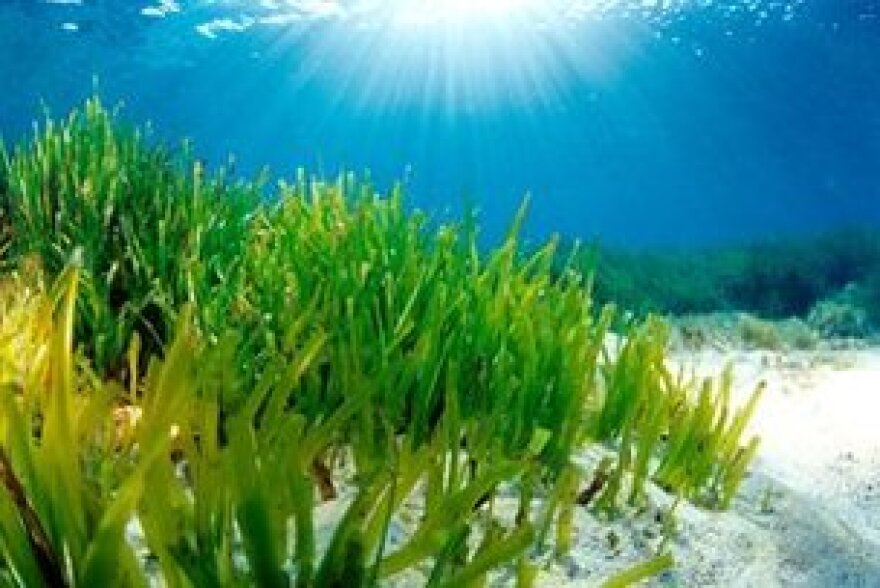A billthat would make building over Florida’s beleaguered seagrass meadows easier is drawing opposition from conservationists and environmental regulators.
You turn to WLRN for reporting you can trust and stories that move our South Florida community forward. Your support makes it possible. Please donate now. Thank you.
If passed by Florida lawmakers, the bill would create seagrass mitigation banks on submerged public lands. The state would grant easements to private companies to grow and manage the seagrass, then sell credits to landowners building projects such as marinas or docks or dredging channels that would harm the state’s disappearing seagrass.
But regulators and environmental groups who oppose the measure worry such banks are doomed to fail for the hard to grow seagrass.
“If we could figure out how to get our seagrass to grow in our public lands, we should be doing that anyways,” said Lee Hefty, director of Miami-Dade County’s division of Environmental Resources Management. “The idea that the solution exists somewhere out there under the water is, I think, a false premise.”
Fixing pollution and flood control that deprives estuaries of clean freshwater, he said, would do more good to save the shrinking coastal meadows that provide habitat for manatees, sea turtles, conchs and a host of wildlife, as well as nurseries for young fish.
“The challenge we face with the loss of seagrasses is the water quality impacts that are happening from the watershed,” Hefty said. “Seagrass is out on the bay bottom, but if the impact is coming from places the private entity doesn't control, like the watershed, then how do you even manage a bank like that?”

Besides providing important habitat for wildlife, seagrass also helps anchor the sea floor, keeping waters clear. It also helps buffer storm surge and absorbs vast amounts of carbon being pulled into oceans.
The loss of seagrass statewide has been substantial. After recovering from a massive die-off in the 1980s and 90s, when too little freshwater reaching the bay caused salinity to spike, Florida Bay crashed again in 2014. More than 60 square miles died. Biscayne Bay has lost more than 20 square miles. Thousands of acres have died in the Indian River Lagoon, causing hundreds of manateesto starve in the last year.
Lawmakers first pitched the idea of seagrass mitigation banks, similar to wetlands mitigation banks, more than a decade ago when Sen. Charlie Crist was governor. Crist vetoed the bill in 2008, objecting to the idea of allowing the destruction of seagrass on public lands only to sell credits for a seagrass bank on public land elsewhere.
Mitigation banks also rarely work. Since the Wetlands Resource Act of 1986 was passed requiring no net loss of wetlands across the U.S., the goal has never been met.
Florida has lost over 9 million acres of wetlands — more than any other state — despite its wetlands mitigation banking program.
“We're at a time right now where we're losing seagrass rapidly to the point where parts of Florida have manatees actually starving,” said Miami Waterkeeper executive director Rachel Silverstein.
“You have to question how successful these banks or seagrass restoration projects are going to be if we're not doing the hard work of fixing the pollution that's killing the seagrass in the first place,” she said.
Mitigation banks also don’t necessarily help where seagrass is dying and needed most if say, a developer in Miami-Dade obtains credit in a bank in the Florida Keys.
The bill was proposed by Republican Sen. Ana Maria Rodriguez, a realtor who represents southern Miami-Dade and Monroe counties. It has so far passed house and senate agriculture and environmental committees.



